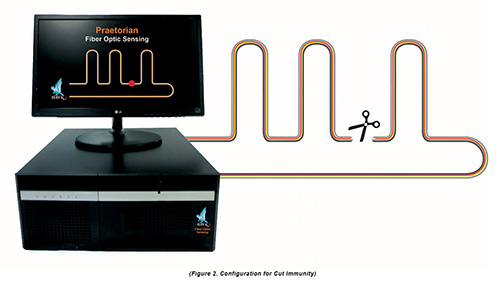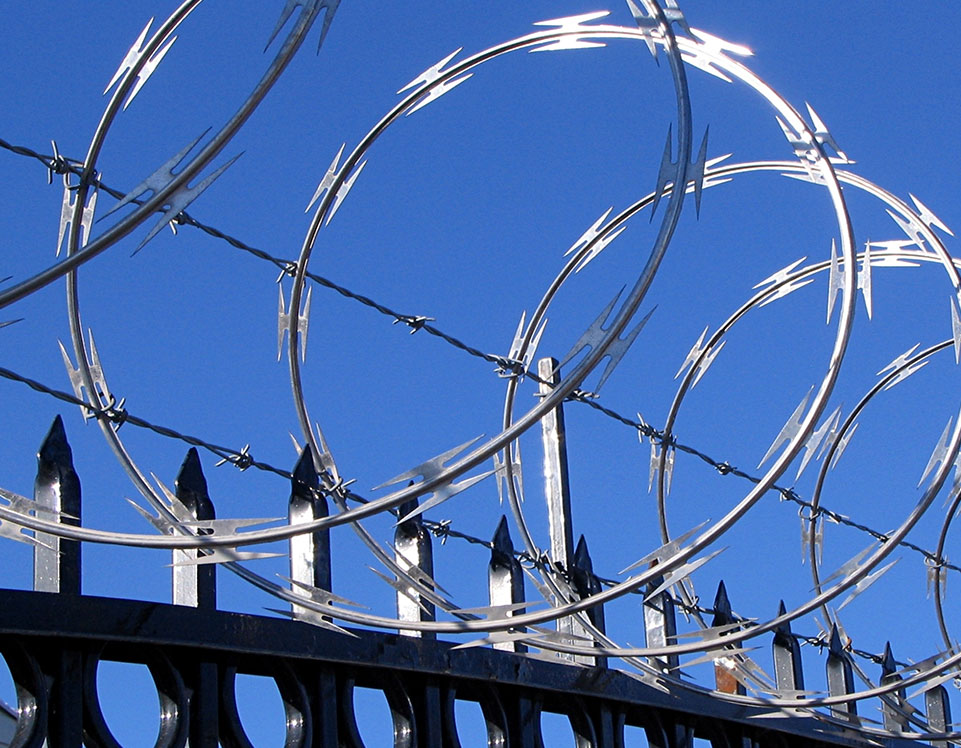Why a Fiber Optic Security System Improves Your Property’s Protection and Monitoring
Why a Fiber Optic Security System Improves Your Property’s Protection and Monitoring
Blog Article
Why Fiber Optic Safety Systems Are the Future of Security
The transition to fiber optic safety systems notes a considerable improvement in the world of defense, driven by their extraordinary data transmission capacities and resilience to exterior disturbances. These systems not only help with faster and much more trustworthy communication but likewise provide an affordable solution with minimized upkeep requirements. As the landscape of security develops alongside emerging innovations such as AI and IoT, the potential for fiber optics to boost and redefine security facilities comes to be progressively apparent. Nonetheless, the implications of these advancements elevate essential questions regarding the future of safety procedures and their efficiency in an ever-changing environment.
Advantages of Fiber Optic Solutions
Among the primary advantages of fiber optic systems is their exceptional data transfer ability, which assists in the transmission of huge quantities of data over cross countries without considerable loss. This particular is specifically beneficial for protection applications that call for the continual monitoring and transfer of high-def video feeds, sensor information, and other important info. Optical fiber can fit the growing needs of modern-day protection systems, making certain that information continues to be intact and trusted.
Furthermore, fiber optic wires are less prone to electro-magnetic interference, which can be a substantial problem in atmospheres with numerous digital devices. This resistance boosts the stability of the data being sent, thereby reducing the threat of data violations or system failures. Moreover, fiber optic systems are naturally more secure than standard copper cords, as touching right into a fiber optic line without discovery is extremely difficult.
The longevity of fiber optic cable televisions likewise contributes to their charm. They are resistant to ecological elements such as wetness and temperature level changes, minimizing upkeep prices and boosting system long life. Overall, these advantages placement fiber optic systems as a robust and efficient selection for contemporary security infrastructures, ensuring reliable and safe data transmission.
Enhanced Information Transmission Speed

The capacity to transfer huge quantities of data swiftly assists in the smooth integration of high-def video feeds and progressed analytics. Security systems can currently refine and analyze info in real-time, boosting reaction times and situational awareness. Furthermore, fiber optic connections sustain longer transmission distances without destruction of signal high quality, making them optimal for large safety networks.
The raised rate of fiber optic systems not only improves the effectiveness of safety and security procedures however additionally minimizes latency. This is specifically crucial in vital internet circumstances where prompt decision-making can stop security breaches or alleviate possible hazards. As organizations remain to focus on security and performance, the need for quick and trustworthy information transmission will undoubtedly solidify fiber optic systems as a keystone of contemporary safety and security infrastructure.
Resistance to Disturbance
Fiber optic safety systems constantly demonstrate remarkable resistance to electro-magnetic interference, a critical advantage in environments vulnerable to electronic noise. Unlike traditional copper cords, which can be negatively influenced by magnetic fields, radio frequency disturbance, and other forms of electrical disruption, fiber optic cable televisions utilize light to send data. This fundamental home ensures that the signals stay clear and unchanged, despite surrounding electronic activity.
Making use of glass or plastic fibers in fiber optic modern technology produces an obstacle versus interference, enabling reliable data transmission even in tough situations such as commercial centers, urban areas with high digital traffic, or places near radio towers. This characteristic significantly minimizes the chance of signal degradation or loss, making fiber optic systems specifically suitable for protection applications where stability and accuracy of information are paramount.
Furthermore, this resistance to interference improves the general performance and reliability of safety and security systems, making certain that surveillance and sharp systems operate seamlessly. In a globe where safety and security Read More Here is significantly intimidated by sophisticated technologies, the resilience of fiber optic systems sticks out as a crucial function, strengthening their standing as a vital component of modern security facilities.
Cost-Effectiveness Over Time
Significant expense financial savings can be accomplished gradually with the implementation of fiber optic protection systems. While the first investment may seem higher compared to typical copper-based systems, the long-term economic benefits come to be noticeable via minimized functional and maintenance costs (fiber security). Fiber optic cable televisions are naturally extra sturdy and much less susceptible to environmental elements, which translates to reduce substitute and repair costs over their life expectancy
Moreover, fiber optic systems call for less power to run, which better reduces energy prices. Boosted information transmission capacities permit less repeaters and amplifiers, decreasing equipment financial investment and simplifying installment procedures. The scalability of these systems additionally adds to cost-effectiveness, as organizations can increase their security framework without sustaining significant added expenditures.
One more element to consider is the boosted effectiveness in tracking and feedback capacities that fiber optics provide. Enhanced real-time information transmission can lead to quicker incident reaction times, possibly description mitigating losses and responsibilities connected with protection violations. Altogether, the lasting advantages of fiber optic protection systems not just warrant the first expense yet likewise place them as a monetarily sensible choice for organizations looking for robust protection solutions.

Future Advancements in Safety And Security
Advancing modern technologies are readied to transform protection systems, integrating expert system (AI) and artificial intelligence to boost threat discovery and feedback capabilities. These developments will certainly allow protection systems to analyze vast quantities of information in real-time, determining patterns and anomalies that suggest potential threats. This aggressive technique will certainly make it possible for much faster decision-making and extra reliable event feedbacks.
Furthermore, the consolidation of the Internet of Things (IoT) is leading the way for interconnected safety gadgets, using detailed surveillance and tracking. Smart sensing units can communicate information regarding ecological changes, while automated alerts can notify protection employees right away of dubious tasks.
Additionally, the advancement of biometric innovations will further strengthen safety and security systems. Facial acknowledgment, finger print scanning, and retina identification are coming to be more sophisticated, offering layers of authentication that are challenging to bypass.
Conclusion
In verdict, fiber optic security systems represent a considerable development in protection innovation, providing unrivaled information transmission speed, resistance to electro-magnetic disturbance, and lasting cost-effectiveness. As the need for sophisticated safety solutions continues to grow, the assimilation of fiber optics with emerging modern technologies such as AI, IoT, and biometrics will certainly additionally enhance safety frameworks (fiber security). The combination of these advancements will certainly make sure an extra safe and secure and responsive environment, solidifying fiber optics as a foundation of future safety systems
Report this page